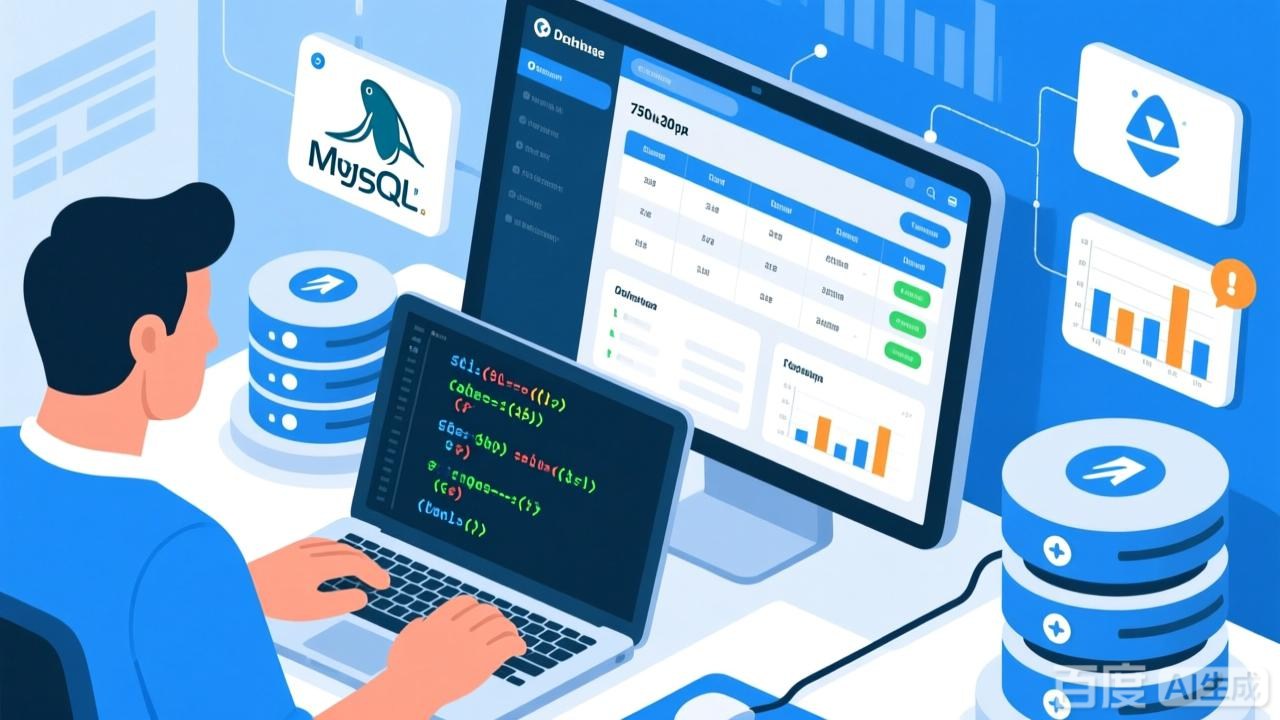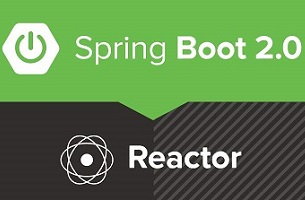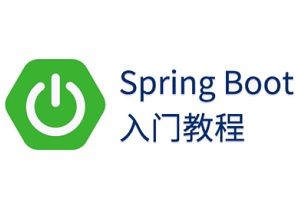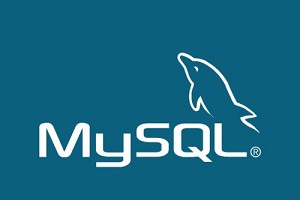有啥不同?来看看Spring Boot 基于 JUnit 5 实现单元测试
云栖号资讯:【点击查看更多行业资讯】
在这里您可以找到不同行业的第一手的上云资讯,还在等什么,快来!
简介
Spring Boot 2.2.0 版本开始引入 JUnit 5 作为单元测试默认库,在 Spring Boot 2.2.0 版本之前,spring-boot-starter-test 包含了 JUnit 4 的依赖,Spring Boot 2.2.0 版本之后替换成了 Junit Jupiter。
JUnit 4 和 JUnit 5 的差异
- 忽略测试用例执行
JUnit 4:
@Test
@Ignore
public void testMethod() {
// ...
}JUnit 5:
@Test
@Disabled("explanation")
public void testMethod() {
// ...
}- RunWith 配置
JUnit 4:
@RunWith(SpringRunner.class)
@SpringBootTest
public class ApplicationTests {
@Test
public void contextLoads() {
}
}JUnit 5:
@ExtendWith(SpringExtension.class)
@SpringBootTest
public class ApplicationTests {
@Test
public void contextLoads() {
}
}- @Before、@BeforeClass、@After、@AfterClass 被替换
@BeforeEach 替换 @Before
@BeforeAll 替换 @BeforeClass
@AfterEach 替换 @After
@AfterAll 替换 @AfterClass
开发环境
JDK 8
示例
1.创建 Spring Boot 工程。
2.添加 spring-boot-starter-web 依赖,最终 pom.xml 如下。
<?xml version="1.0" encoding="UTF-8"?>
<project xmlns="http://maven.apache.org/POM/4.0.0" xmlns:xsi="http://www.w3.org/2001/XMLSchema-instance"
xsi:schemaLocation="http://maven.apache.org/POM/4.0.0 https://maven.apache.org/xsd/maven-4.0.0.xsd">
<modelVersion>4.0.0</modelVersion>
<parent>
<groupId>org.springframework.boot</groupId>
<artifactId>spring-boot-starter-parent</artifactId>
<version>2.2.6.RELEASE</version>
<relativePath/>
</parent>
<groupId>tutorial.spring.boot</groupId>
<artifactId>spring-boot-junit5</artifactId>
<version>0.0.1-SNAPSHOT</version>
<name>spring-boot-junit5</name>
<description>Demo project for Spring Boot Unit Test with JUnit 5</description>
<properties>
<java.version>1.8</java.version>
</properties>
<dependencies>
<dependency>
<groupId>org.springframework.boot</groupId>
<artifactId>spring-boot-starter-web</artifactId>
</dependency>
<dependency>
<groupId>org.springframework.boot</groupId>
<artifactId>spring-boot-starter-test</artifactId>
<scope>test</scope>
<exclusions>
<exclusion>
<groupId>org.junit.vintage</groupId>
<artifactId>junit-vintage-engine</artifactId>
</exclusion>
</exclusions>
</dependency>
</dependencies>
<build>
<plugins>
<plugin>
<groupId>org.springframework.boot</groupId>
<artifactId>spring-boot-maven-plugin</artifactId>
</plugin>
</plugins>
</build>
</project>3.工程创建好之后自动生成了一个测试类。
package tutorial.spring.boot.junit5;
import org.junit.jupiter.api.Test;
import org.springframework.boot.test.context.SpringBootTest;
@SpringBootTest
class SpringBootJunit5ApplicationTests {
@Test
void contextLoads() {
}
}这个测试类的作用是检查应用程序上下文是否可正常启动。@SpringBootTest 注解告诉 Spring Boot 查找带 @SpringBootApplication 注解的主配置类,并使用该类启动 Spring 应用程序上下文。互联网架构师公众号内回复“2T”, 送你全套Java架构视频
4.补充待测试应用逻辑代码
4.1. 定义 Service 层接口
package tutorial.spring.boot.junit5.service;
public interface HelloService {
String hello(String name);
}4.2. 定义 Controller 层
package tutorial.spring.boot.junit5.controller;
import org.springframework.web.bind.annotation.GetMapping;
import org.springframework.web.bind.annotation.PathVariable;
import org.springframework.web.bind.annotation.RestController;
import tutorial.spring.boot.junit5.service.HelloService;
@RestController
public class HelloController {
private final HelloService helloService;
public HelloController(HelloService helloService) {
this.helloService = helloService;
}
@GetMapping("/hello/{name}")
public String hello(@PathVariable("name") String name) {
return helloService.hello(name);
}
}4.3. 定义 Service 层实现
package tutorial.spring.boot.junit5.service.impl;
import org.springframework.stereotype.Service;
import tutorial.spring.boot.junit5.service.HelloService;
@Service
public class HelloServiceImpl implements HelloService {
@Override
public String hello(String name) {
return "Hello, " + name;
}
}5.编写发送 HTTP 请求的单元测试。
package tutorial.spring.boot.junit5;
import org.assertj.core.api.Assertions;
import org.junit.jupiter.api.Test;
import org.springframework.beans.factory.annotation.Autowired;
import org.springframework.boot.test.context.SpringBootTest;
import org.springframework.boot.test.web.client.TestRestTemplate;
import org.springframework.boot.web.server.LocalServerPort;
@SpringBootTest(webEnvironment = SpringBootTest.WebEnvironment.RANDOM_PORT)
public class HttpRequestTest {
@LocalServerPort
private int port;
@Autowired
private TestRestTemplate restTemplate;
@Test
public void testHello() {
String requestResult = this.restTemplate.getForObject("http://127.0.0.1:" + port + "/hello/spring",
String.class);
Assertions.assertThat(requestResult).contains("Hello, spring");
}
}说明:
webEnvironment = SpringBootTest.WebEnvironment.RANDOM_PORT 使用本地的一个随机端口启动服务;
@LocalServerPort 相当于 @Value("${local.server.port}");
在配置了 webEnvironment 后,Spring Boot 会自动提供一个 TestRestTemplate 实例,可用于发送 HTTP 请求。
除了使用 TestRestTemplate 实例发送 HTTP 请求外,还可以借助 org.springframework.test.web.servlet.MockMvc 完成类似功能,代码如下:
package tutorial.spring.boot.junit5.controller;
import org.assertj.core.api.Assertions;
import org.junit.jupiter.api.Test;
import org.springframework.beans.factory.annotation.Autowired;
import org.springframework.boot.test.autoconfigure.web.servlet.AutoConfigureMockMvc;
import org.springframework.boot.test.context.SpringBootTest;
import org.springframework.test.web.servlet.MockMvc;
import org.springframework.test.web.servlet.request.MockMvcRequestBuilders;
import org.springframework.test.web.servlet.result.MockMvcResultHandlers;
import org.springframework.test.web.servlet.result.MockMvcResultMatchers;
@SpringBootTest
@AutoConfigureMockMvc
public class HelloControllerTest {
@Autowired
private HelloController helloController;
@Autowired
private MockMvc mockMvc;
@Test
public void testNotNull() {
Assertions.assertThat(helloController).isNotNull();
}
@Test
public void testHello() throws Exception {
this.mockMvc.perform(MockMvcRequestBuilders.get("/hello/spring"))
.andDo(MockMvcResultHandlers.print())
.andExpect(MockMvcResultMatchers.status().isOk())
.andExpect(MockMvcResultMatchers.content().string("Hello, spring"));
}
}以上测试方法属于整体测试,即将应用上下文全都启动起来,还有一种分层测试方法,譬如仅测试 Controller 层。
6.分层测试。
package tutorial.spring.boot.junit5.controller;
import org.assertj.core.api.Assertions;
import org.junit.jupiter.api.Test;
import org.mockito.Mockito;
import org.springframework.beans.factory.annotation.Autowired;
import org.springframework.boot.test.autoconfigure.web.servlet.WebMvcTest;
import org.springframework.boot.test.mock.mockito.MockBean;
import org.springframework.test.web.servlet.MockMvc;
import org.springframework.test.web.servlet.request.MockMvcRequestBuilders;
import org.springframework.test.web.servlet.result.MockMvcResultHandlers;
import org.springframework.test.web.servlet.result.MockMvcResultMatchers;
import tutorial.spring.boot.junit5.service.HelloService;
@WebMvcTest
public class HelloControllerTest {
@Autowired
private HelloController helloController;
@Autowired
private MockMvc mockMvc;
@MockBean
private HelloService helloService;
@Test
public void testNotNull() {
Assertions.assertThat(helloController).isNotNull();
}
@Test
public void testHello() throws Exception {
Mockito.when(helloService.hello(Mockito.anyString())).thenReturn("Mock hello");
this.mockMvc.perform(MockMvcRequestBuilders.get("/hello/spring"))
.andDo(MockMvcResultHandlers.print())
.andExpect(MockMvcResultMatchers.status().isOk())
.andExpect(MockMvcResultMatchers.content().string("Mock hello"));
}
}说明:
@WebMvcTest 注释告诉 Spring Boot 仅实例化 Controller 层,而不去实例化整体上下文,还可以进一步指定仅实例化 Controller 层的某个实例:@WebMvcTest(HelloController.class);
因为只实例化了 Controller 层,所以依赖的 Service 层实例需要通过 @MockBean 创建,并通过 Mockito 的方法指定 Mock 出来的 Service 层实例在特定情况下方法调用时的返回结果。
【云栖号在线课堂】每天都有产品技术专家分享!
课程地址:https://yqh.aliyun.com/zhibo立即加入社群,与专家面对面,及时了解课程最新动态!
【云栖号在线课堂 社群】https://c.tb.cn/F3.Z8gvnK
 关注公众号
关注公众号
低调大师中文资讯倾力打造互联网数据资讯、行业资源、电子商务、移动互联网、网络营销平台。
持续更新报道IT业界、互联网、市场资讯、驱动更新,是最及时权威的产业资讯及硬件资讯报道平台。
转载内容版权归作者及来源网站所有,本站原创内容转载请注明来源。
-
上一篇

吃惊!难道Java也受美国出口管制?
云栖号资讯:【点击查看更多行业资讯】在这里您可以找到不同行业的第一手的上云资讯,还在等什么,快来! 今天,去翻看了一下Oracle Jdk的许可协议,竟然是受美国出口管制。 原文是这么说的:EXPORT REGULATIONS. You agree that U.S. export control laws and other applicable export and import laws govern your use of the Software, including technical data; additional information can be found on Oracle's Global Trade Compliance web site (http://www.oracle.com/us/products/export). You agree that neither the Software nor any direct product thereof will be exported, directly, or indirectly, in viol...
-
下一篇

可笑,架构师也能写出这样的Bug
云栖号资讯:【点击查看更多行业资讯】在这里您可以找到不同行业的第一手的上云资讯,还在等什么,快来! 小伙话不多,但一旦说话斩钉截铁,带着无法撼动的自信。原因就是,有他着数亿高并发经验,每一秒钟的请求,都是其他企业运行一年也无法企及的。这就让人非常羡慕,毕竟他靠这个比我赚的钱要多。 俗话说,要想在公司不出事故,那就不要写代码。干活多了容易出事,一身轻松无人问津,这就是现实。 但有时候还是要看成果的。新来的研发领导不懂技术,但他懂技术指标,所以就统计大家提交 Git 的数量,如果 Git 活动是一片绿色如 A 股,那就算过关了。 架构师思来想去,决定领一个并发量最高的需求:统计接口的平均响应时间和启动以来的请求数。 为什么说它的并发量高呢?这是因为,它是统计所有接口的,自然比每一个接口的请求量都要大。AOP 代码一包,每个接口都得从他这里走一圈。 该我们的架构师上场了,代码如下图: 架构师说,我的代码不需要做注释。所谓的注释,都是给垃圾代码用的。我深以为是,他明显是受到了 Netflix 公司的影响。 程序考虑到了高并发场景,使用了线程安全的 ConcurrentHashMap,然后每次通...
相关文章
文章评论
共有0条评论来说两句吧...
文章二维码
点击排行
推荐阅读
最新文章
- SpringBoot2初体验,简单认识spring boot2并且搭建基础工程
- Docker容器配置,解决镜像无法拉取问题
- SpringBoot2编写第一个Controller,响应你的http请求并返回结果
- CentOS7编译安装Cmake3.16.3,解决mysql等软件编译问题
- SpringBoot2全家桶,快速入门学习开发网站教程
- CentOS6,CentOS7官方镜像安装Oracle11G
- MySQL数据库中FOR UPDATE的使用
- SpringBoot2更换Tomcat为Jetty,小型站点的福音
- SpringBoot2整合Redis,开启缓存,提高访问速度
- CentOS8安装MyCat,轻松搞定数据库的读写分离、垂直分库、水平分库









 微信收款码
微信收款码 支付宝收款码
支付宝收款码